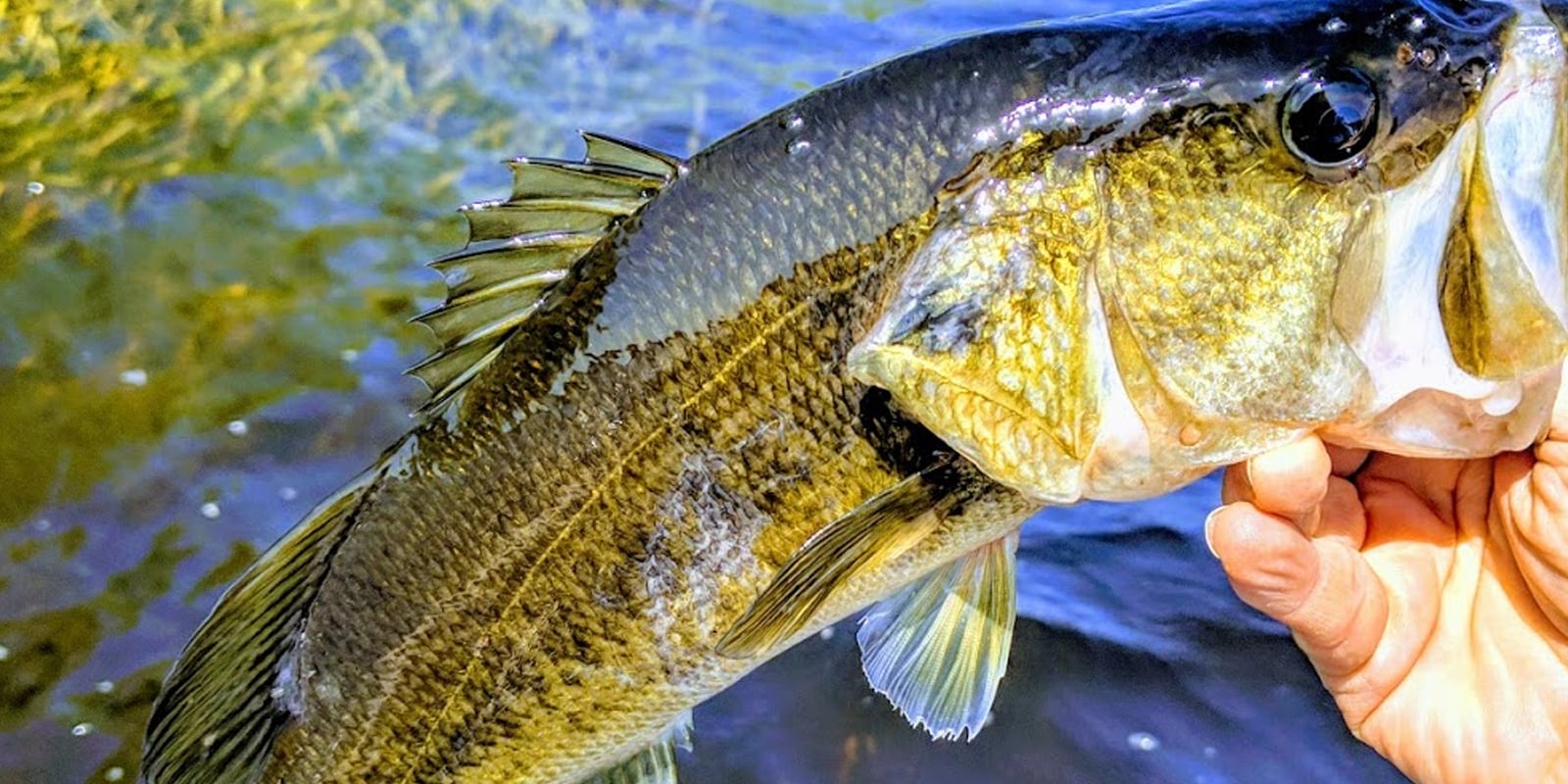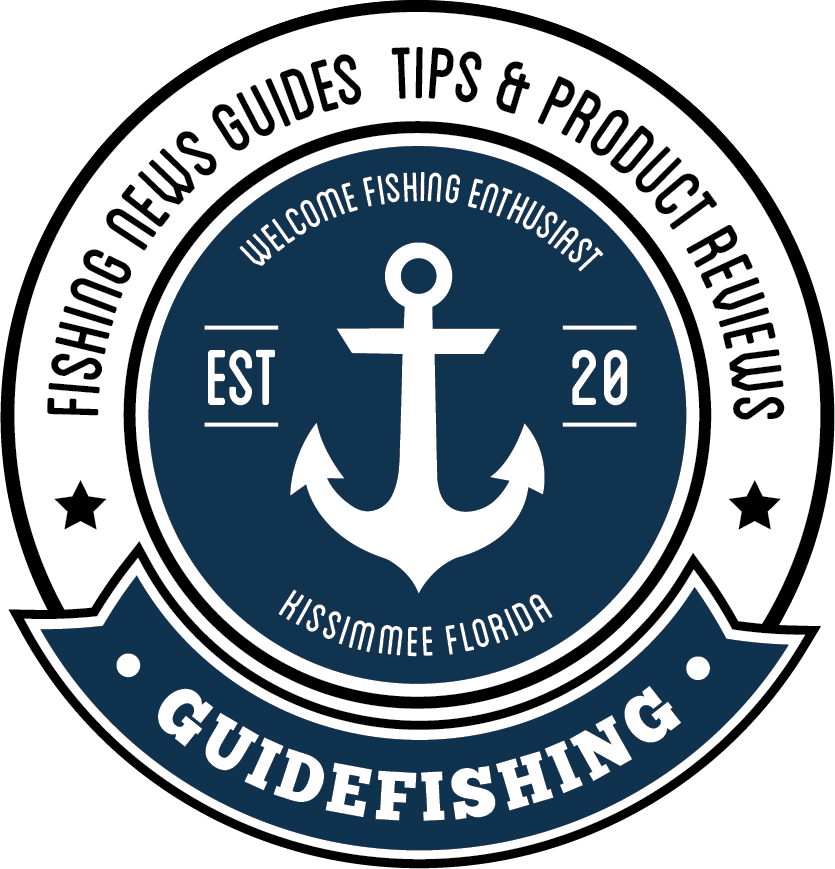Have you ever wondered how wind can be your secret weapon in bass fishing? In this blog post, we’ll unveil the secrets of “how wind affects bass” behavior, influencing their feeding, movement, and the water conditions they inhabit. By understanding how wind affects bass, you can harness the power of wind to increase your chances of success on the water.
Overview
- Harness the power of wind to increase your chances of successful bass fishing with strategic boat positioning, lure selection and casting technique.
- Identify prime wind-driven hotspots such as banks, points and flats for ideal conditions.
- Prepare equipment & monitor weather conditions for a safe yet enjoyable trip.
- This article applies to hard bottom lakes. Florida, and other soft bottom lakes are different.
The Influence of Wind on Bass Behavior
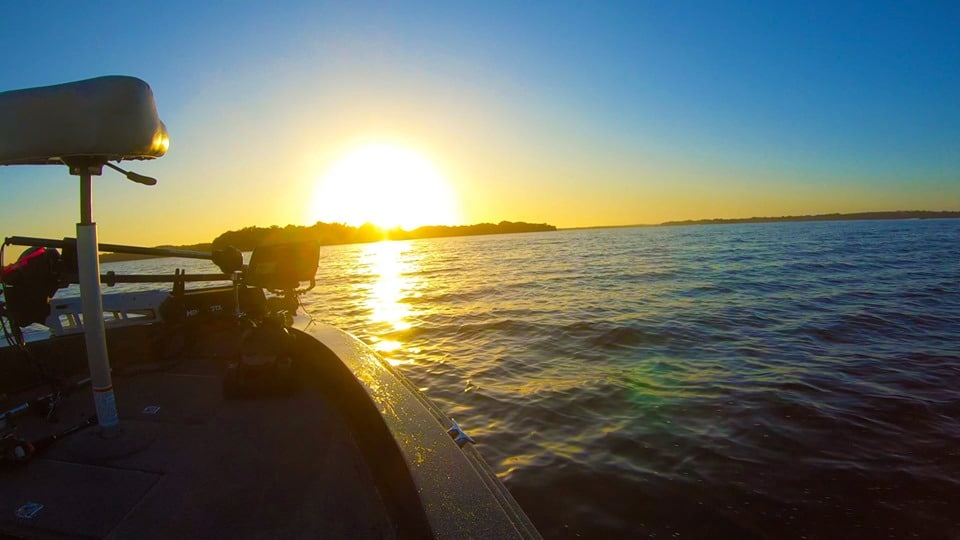
Wind significantly influences bass behavior, impacting their feeding, movement, and the water conditions they prefer. As the wind blows, it generates rollers and waves, encouraging feeding sprees among bass and other gamefish. The positive effects of wind on the movement patterns of bass include bringing them into shallower areas where they are easier to catch and oxygenating the water, which can stimulate bass activity. Moreover, wind can positively affect water clarity and temperature, shaping bass behavior and location.
Every bass angler needs to comprehend how wind impacts bass behavior. Leveraging windy conditions can notably boost your success rates on the water. Subsequent sections will delve into the specific impacts of wind on bass behavior, such as prompting feeding activity, aiding movement, and altering water clarity and temperature.
Stimulating Feeding Activity
Wind enhances bass feeding activity by:
- Stirring up zooplankton in the shallows
- Drawing baitfish to feed on the microorganisms
- Attracting bass and other predators to the shallows to feed on the baitfish
When the wind starts blowing on windy days, a strong wind creates movement in the water that can encourage feeding sprees among bass and other gamefish, leading to a few bites for anglers.
Zooplankton are fascinating tiny creatures that live in lakes, rivers, and oceans, providing a nutritious food source for small fish like baitfish. Strong winds and wave action churn up the water, which is an exciting stimulus for baitfish and predators alike. As the wind churns up zooplankton, a chain reaction occurs, attracting small fish and then larger predators like bass. Grasping this food chain scenario enables anglers to select optimal bass lures that imitate bass’s natural prey, thereby enhancing their likelihood of a successful catch.
Encouraging Movement
Wind facilitates bass movement to specific hotspots, making them easier to locate and catch. Ideal locations for bass in windy conditions include:
- Shoreline pockets
- Points
- Flats near a point
- Areas with moving water around structure
Wind direction can greatly benefit the movement of bass, as it creates current in the water and positions bass to ambush bait, making it an ideal period of activity for bass.
Wind speed beneficially alters the movement patterns of bass, leading them to shallower areas for feeding. The wind:
- Chops the surface and reduces light penetration, making the bass more active
- Brings them into shallower areas, making them easier to catch
- Moves the baitfish and their food supply, further increasing the activity of the bass
Overall, wind can be incredibly beneficial in stimulating the movement and feeding behavior of feeding bass.
Affecting Water Clarity and Temperature
Wind favorably impacts water clarity and temperature, subsequently influencing bass behavior and location. Wind-induced water mixing can lead to a more even temperature distribution throughout the water body, while wind-induced turbulence can create waves and currents that mix the surface water with the cooler water below. Additionally, wind can influence the rate of heat transfer between the water and the surrounding air, with stronger winds generally leading to faster heat loss from the water.
Wind can enhance the clarity of water in bass fishing locations by stirring up sediment and life in the water, increasing light penetration and enhancing visibility. Changes in water clarity and temperature can have beneficial effects on bass behavior, enhancing their ability to see and target prey, as well as increasing their metabolism, activity level, and feeding patterns. Understanding the effects of wind on water clarity and temperature can help anglers plan their fishing trips and select the best bass lures for the situation.
Harnessing the Power of Wind: Techniques for Successful Bass Fishing
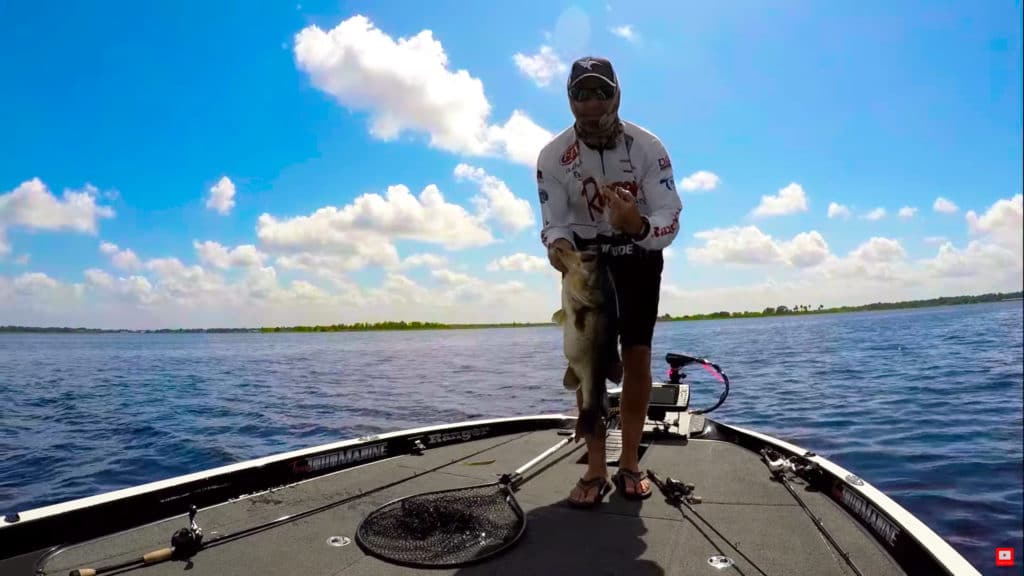
Having recognized the significance of wind in bass behavior, we should now examine techniques that utilize the wind’s power for a successful bass fishing experience. By positioning your boat to take advantage of the wind, selecting the ideal lures for windy conditions, and adjusting your casting technique, you can greatly increase your chances of catching bass.
Subsequent sections will investigate specific strategies for maximizing windy conditions. These include positioning your boat, selecting the right lures, and adapting your casting technique to present your lure smoothly and efficiently in windy conditions.
Positioning Your Boat
Wind direction can significantly aid in positioning your boat for bass fishing. The wind creates current in the water, positioning the bass to ambush bait and making it an ideal period of activity for bass. Additionally, the wind can disturb the water’s surface and reduce light penetration, making it easier for bass to spot and catch their prey. Anglers can position their boat in a way that allows them to take advantage of these factors.
Drift socks can be used to effectively control boat drift when bass fishing in wind by attaching a larger sock to a cleat just below the bow and a smaller sock at the rear on either the port or starboard side. This helps to keep the boat perfectly perpendicular to the current or wind, allowing for excellent control and positioning while fishing.
Alternatively, using a trolling motor for controlling boat speed while bass fishing in windy conditions enables you to maintain a consistent speed and direction, even in strong winds, which facilitates staying on target and covering more water efficiently.
Selecting the Right Lures
Selecting appropriate lures for windy conditions is pivotal to successful bass fishing. In windy conditions, heavy, flashy, and fast-moving lures that mimic baitfish are the most effective. Reaction baits like speed worms, crankbaits, spinnerbaits, swimbaits, and jerkbaits are the most effective bass fishing lures for windy conditions.
Heavy lures are advantageous in windy conditions because they are more aerodynamic, providing better casting and control even in strong winds. Flashy lures with bright colors and reflective surfaces can mimic the look of baitfish, making them more visible and attractive to bass. Furthermore, the flash and vibration created by these lures can help bass identify and hit the lure despite the disturbance caused by wind and waves.
Adapting Your Casting Technique
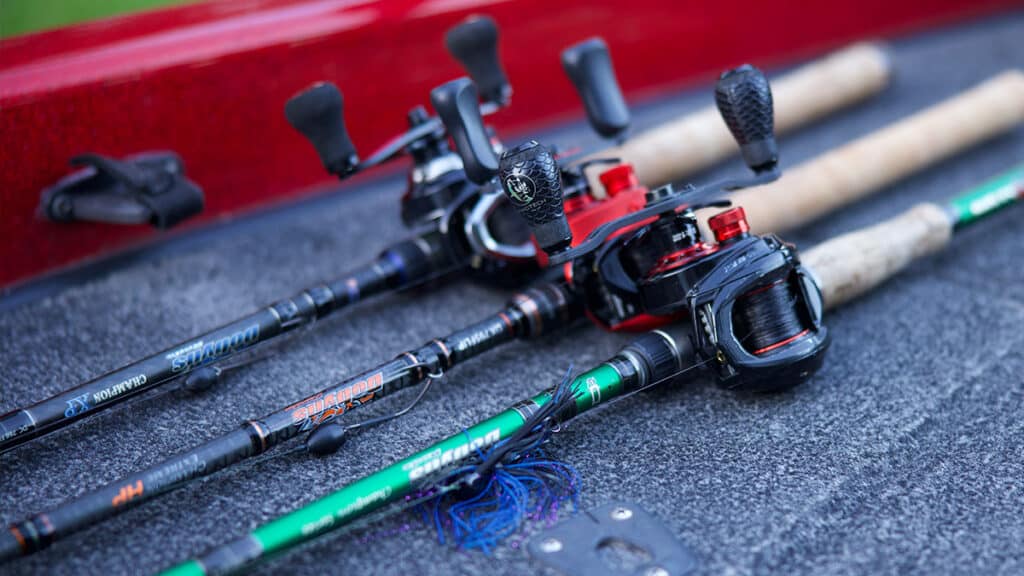
Modifying your casting technique is key to presenting your lure naturally and effectively in windy conditions. Casting into the wind is the ideal way to present your lure smoothly and efficiently in windy conditions.
When fishing in windy conditions, bass fishermen can improve their success by employing certain casting techniques, such as:
- Using spinnerbaits and crankbaits
- Targeting wind-blown banks, riprap, and points
- Staying stable and maintaining balance
- Utilizing shallow-water anchors and modern trolling motors
Understanding the effects of wind on your casting technique and adapting accordingly can greatly improve your chances of a successful catch.
Identifying Prime Wind-Driven Bass Hotspots
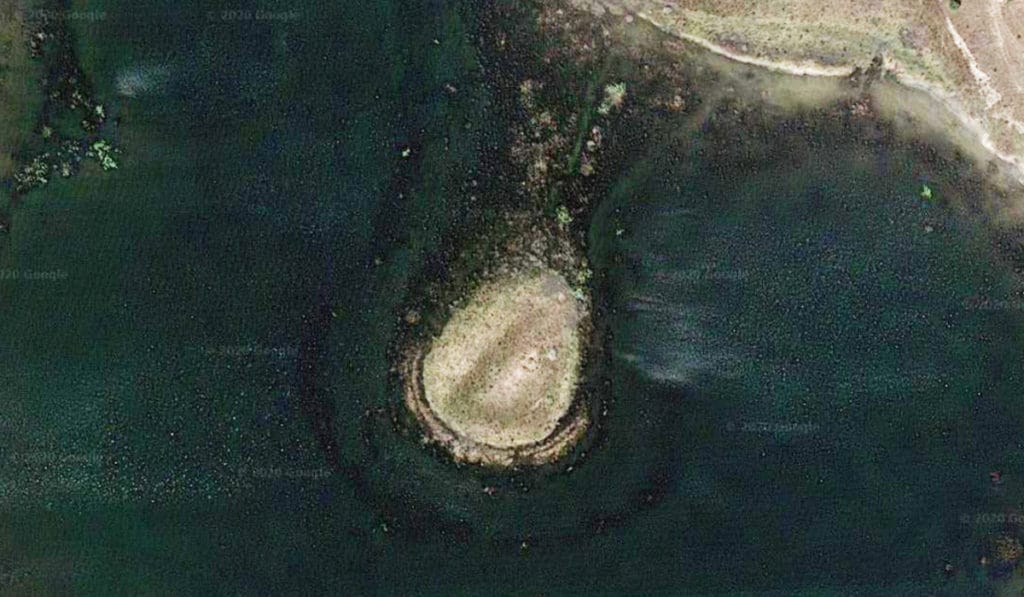
To fully capitalize on windy conditions, targeting prime wind-driven bass hotspots is crucial. These include:
- Windblown banks
- Points
- Flats
- Shallow water areas
All of these areas are known to attract bass and increase your chances to catch bass on the water, especially for bass anglers seeking more bass.
In the following subsections, we’ll explore each of these prime wind-driven bass hotspots in more detail, discussing the specific advantages and techniques associated with fishing in these areas during windy conditions.
Windblown Banks
Windblown banks can be ideal fishing spots for bass because they:
- Trigger bass into biting
- Provide increased feeding opportunities
- Create ripples and waves that change subsurface light, attracting bass
- Depending on the direction of the wind, position them in advantageous areas near windblown banks.
The effect of wind on bait distribution along windblown banks is beneficial as it makes baitfish more active due to the movement of their food supply, which can attract bass. Furthermore, wind pushes bait up onto riprap, natural rock, and mud lines along the banks, providing more opportunities for bass to feed. By targeting windblown banks, you can greatly increase your chances of successful bass fishing.
Points and Flats
Points and flats are prime locations for bass in windy conditions because they provide cover and feeding opportunities. Bass take advantage of the current created by the wind, which pushes baitfish and other prey towards these areas, making them easy targets. The wind can also create choppy water and provide cover, making it even easier for the bass to ambush their prey.
Spinnerbaits, lipless crankbaits, chatterbaits, jerkbaits, and crankbaits are all excellent choices for bass fishing at points and flats in windy conditions. By targeting points and flats during windy conditions, you can increase your chances of catching bass.
Shallow Water
Shallow water areas attract baitfish and bass during windy conditions, leading to increased chances of successful bass fishing. The wind creates ‘mud lines’ which bring forage and cover for bass and also oxygenates the water, making shallow water areas more favorable for bass.
Reaction baits that can be effectively used in these conditions include:
- Crankbaits
- Spinnerbaits
- Swimbaits
- Jerkbaits
- Speed Worms
The jerking and pausing method can also be effective. Additionally, the wind can be taken advantage of to concentrate baitfish against shorelines. By focusing on shallow water areas during windy conditions, you can greatly improve your chances of catching bass.
Staying Safe While Bass Fishing in Windy Conditions
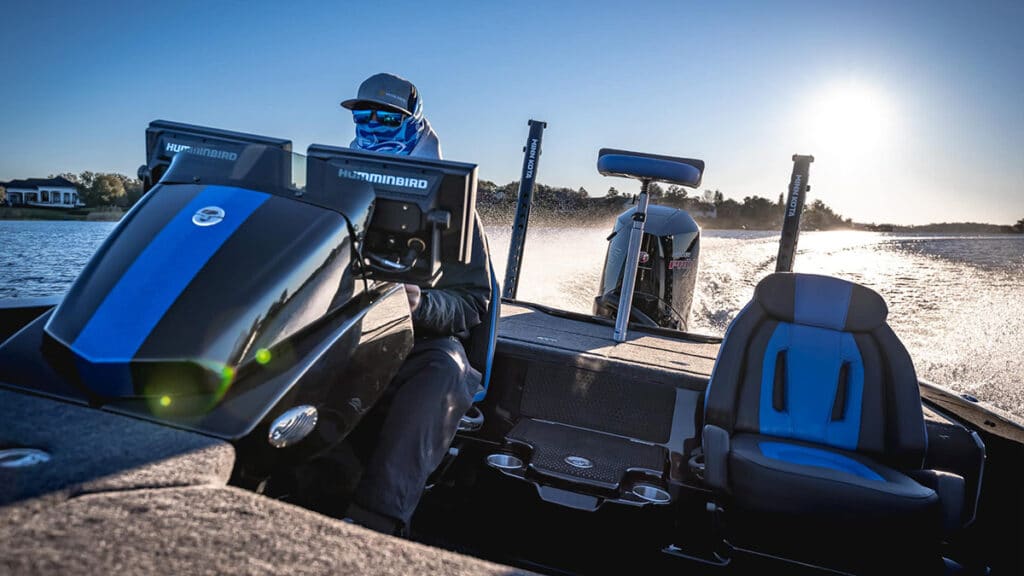
Guaranteeing safety during bass fishing in windy conditions is paramount. Preparing your equipment and monitoring weather conditions can help you stay safe and make the most of your fishing experience.
In the following subsections, we’ll discuss specific safety measures you can take when bass fishing in windy conditions, including preparing your equipment and monitoring weather conditions.
Preparing Your Equipment
Prior to venturing out in windy conditions, it’s crucial to inspect and secure your equipment, charge batteries, and safely store loose items. Charging batteries for your fishing equipment properly is key, as it can extend their lifespan and ensure optimal performance. When charging batteries, it’s important to follow the manufacturer’s instructions and connect the charger accordingly, as well as avoid overcharging the batteries to prevent potential damage from overheating.
During high winds on a fishing boat, it’s important to ensure loose items remain safe by removing and securely storing them in a secure location. If there are items that cannot be removed, such as doors, windows, or storage hatches, it’s recommended to tie them down to keep them secure.
Monitoring Weather Conditions
Keeping an eye on weather forecasts is a great way to ensure a successful and safe fishing experience. If wind velocity or direction changes significantly, you can make any necessary adjustments to your plans. Monitoring weather conditions can help you plan your fishing trips more effectively, as changes in wind velocity and direction can have a positive impact on the behavior of bass.
BassForecast and Fishbrain are the best apps for monitoring weather conditions for bass fishing. These apps provide incredibly accurate predictions based on factors like moon phases and seasonal patterns, so you can plan your fishing trips with confidence.
Summary
In conclusion, understanding the influence of wind on bass behavior is crucial for successful bass fishing. By harnessing the power of wind and targeting prime wind-driven bass hotspots, you can increase your chances of success on the water. Always remember to prepare your equipment and monitor weather conditions to ensure a safe and enjoyable fishing experience. With the right knowledge, techniques, and safety precautions, you can transform windy conditions into your secret weapon for bass fishing success.
Frequently Asked Questions
When it’s windy, bass move to the windier side of the lake and face the current. Spinnerbaits and crankbaits can be used to take advantage of the choppiness that the wind creates, and they often hide on one side of a point to ambush prey. Additionally, make sure to present your lure from in front of the bass for the best chance at a strike.
For optimal bass fishing, a howling wind crashing into the banks is ideal, except when water temperatures are cold, in which case calmer areas exposed to sun are better.
Reel in the big ones with crankbaits, spinnerbaits, swimbaits, and jerkbaits – these reaction baits are the most reliable lures for bass fishing in windy conditions.
You can control boat drift and speed while bass fishing in windy conditions by using drift socks or trolling motors.
Windblown banks, points, flats, and shallow water areas are prime spots for successful bass fishing when the wind is blowing. Be sure to take advantage of these prime wind-driven hotspots!


